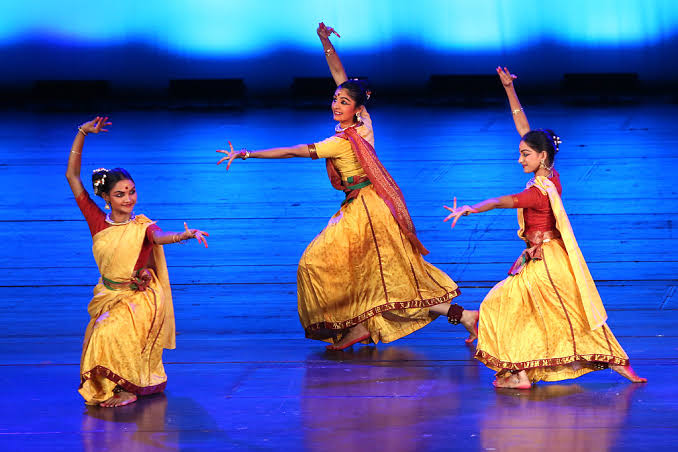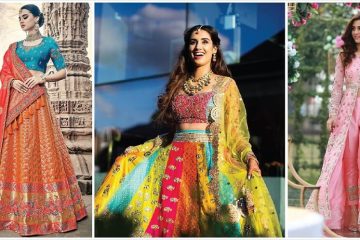In the rich cultural tapestry of India, the Indian classical dance forms are the most prominent art forms distinguished because of their expressive prowess, mesmerising narratives, intricate gestures, and profound spiritual implications. Owing to globalisation and increased interest in the Indian classical dance form among cultures all across the world, this art form is not just limited to India but has transcended the borders to blend Indian culture and tradition into the global cultural fabric. With many projects on fusion art forms and endeavours of cultural exchange or bridging the gap between the cultural traditions of countries, the classical dance of India has gained a lot of exposure in the global sector appealing to the sensibilities of the international audience as well. This increased interest and attraction towards the innovative choreography of the Indian classical dance forms, brought to life by their thematic presentation and excellent articulation in the dance recitals, has encouraged millions of people all across the world. This has resulted in the integration of the successful fusing of the Indian art form and the international creative art forms, which are currently ruling the international stage as well.
The diaspora of classical dance of India into the world cultures is evident in the steady acceptance and growth in the number of Indian classical dancers, who are of foreign origin and have become stalwarts of Indian classical dance forms. Of these, some of the most distinguished personalities include Ileana Citaristi, Maria Kochetkova, and Eiko Shinohara, who have been conferred with the Padma Shri award for their contributions to the dance form of Odissi. There is also immense popularity for the Kathak dance form in China, where it is soon going to be incorporated into Chinese Dance Academies as a part of their curriculum. Not only that, in South African dance theatres as well, a fusion of Bharatnatyam and African dance symbolises the cross-cultural potential of Indian classical dance form. Besides Kathak, Bharatnatyam, Kuchipudi, and Mohiniattam have also attracted a huge international population towards Indian classical art forms and its rich cultural and spiritual heritage, along with the uniqueness of Indian clothes, cuisine, and fashion. With this level of global popularity of the classical dance of India, it is a matter of immense pride for Indians to witness such a global recognition of this traditional art form of India in the form of international dance festivals and workshops that offer exemplary collaborations with Indian classical dance form with western dance forms like jazz or ballet.
It feels quite surreal to think that the strong evocative power of the Indian classical dance form is capable of steering the emotions and soul of Western countries, whose cultural tapestry is quite different from that of India. At the same time, it also cannot be denied that it is not exactly the cultural difference, but the common thread of spirituality and soulfulness that unites the oriental and the occidental world. It is the authenticity and the omnipresence of these dance forms, the devotional narratives, the colourful costumes, and the expressions of the dancers that have influenced and won the hearts of people from all across the globe. If you could just sit in London and watch a two-hour program of classical dance of India, it would be like a historical panorama of Indian art and culture before your eyes that would help you to glimpse into the history of India which was steeped in spiritual elements, high imagination, and unparalleled creativity.
The art of storytelling is appealing to every individual, be it in the form of a written narrative, a visual narrative, or even a dance narrative, irrespective of cultural background. The Indian classical dance forms are replete with such narratives, which sometimes extract mythological episodes in their recitals or mainly sing devotional hymns for a particular deity or can be beautiful storytelling of love or any other episode of war. Audiences who love to be a part of these narratives and feel themselves deeply immersed in the world of the stories being told through these expressive dance forms are irrevocably attracted towards the rich storytelling tradition of the Indian classical dance forms, thereby paving the path of blending classical dance of India into the world culture through creative expression.
Like every other physical activity, the classical dance of India is also very demanding in terms of strength, agility, stamina, and flexibility. In fact, flexibility is the key mantra of Indian classical dance form which has been further reiterated by several health experts who believe in the power of Indian classical dance forms in improving concentration, emotional balance, and overall mental health of a person. Automatically, people all across the world from different cultural backgrounds, especially the ones who are conscious about their health or follow a strict fitness regimen, feel a tremendous pull towards the classical dance of India. Not only can they get their own share of emotional catharsis by expressing themselves through the dance forms, but also incorporate this beautiful and enchanting dance form in their fitness regimen as well to stay healthy both emotionally and physically.
Since the 5th century BC, the Indian classical dance forms have evolved and endured the tribulations placed by time, but that has not diminished its popularity even a bit. These classical dance forms of India never required any relaunching because of artists like Uday Shankar, who envisioned the popularity of this priceless piece of Indian classical heritage into the global platforms and created fusion style choreographies to merge Indian classical dance forms with tribal, classical, or folk dance. On the contrary, supported by art connoisseurs all across the world, Indian classical dance forms have surmounted all the obstacles and have permeated the global mass representing Indian culture and heritage on the global platform, catering to the experimental tastes of art lovers.



